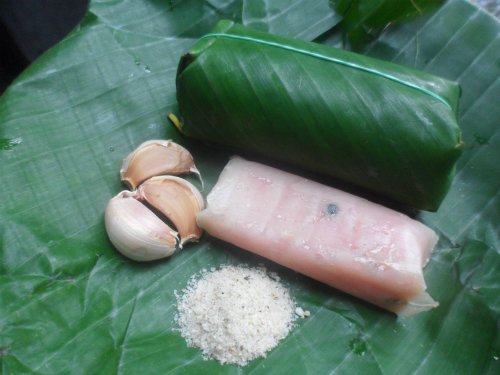The slightly sour taste of natural fermented pork combined with the aroma of pepper, garlic, the sweet taste of rock sugar, the crispness of pork skin... brings the impressive flavor of Hue fermented pork (nem chua).
Hue is famous not only for beautiful scenery, places of interest and historical relics, but also for its cuisine which is diverse, rich and quintessential.Though fermented pork is not a rare dish, each place has its own different processing, carrying the flavor of hometown cuisine. This makes Hue fermented pork familiar but strange to visitors.
Ingredients of Hue fermented pork include lean pork meat, pork skin, garlic, chili, rock sugar, spices..., guava leaves and banana leaves. Delicious fermented pork depends on the selection of meat and spices. In order to make the well-done fermented pork rolls, the meat must be soft and fresh; the seasoning is just enough, and the leaves have to be clean.
The lean pork meat is well pounded or minced, and seasoned with spices and rock sugar. Boiled pork skin is drained before it is finely chopped and well mixed into the mixture of meat. After preparing the ingredients, the leaves are used to wrap the pork mixture into rolls. The leaves must be cleaned in advance and not wet.

After about 3 days of fermentation,Hue fermented pork is ready for eating. Photo: 15s
Hue people are very sophisticated in the presentation of dishes. Thus, in the process of dividing pork mixture into small portions and arranging each portion on the banana leaf, the maker has to make them the same size and good-looking. Then, each pork portion is added with some slices of garlic, chili, pepper on top and then wrapped by young guava and banana leaves.
After wrapped, the pork rolls are left to get fermented for 3 days before they are ready for eating. The standard Hue fermented pork must be light pink with fine surface and the sour taste of natural fermented pork, the crispness of pork skin, the aroma of garlic, pepper and chilli.
For Hue people, fermented pork is one of the favourite dishes. It can be eaten as a snack with alcoholic drinks, and often appears in weddings or death anniversaries of local people.